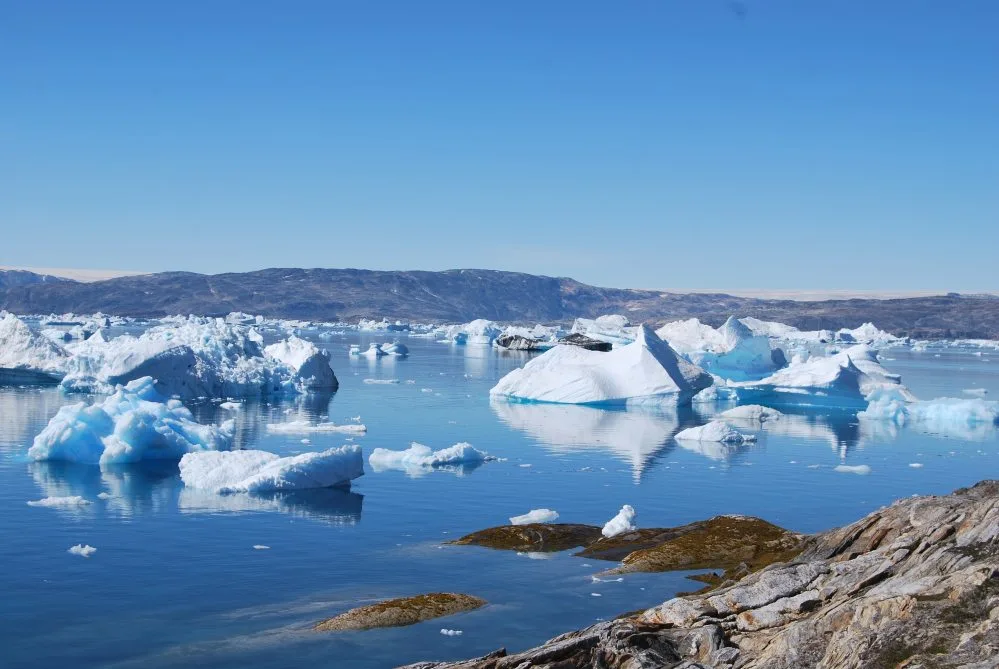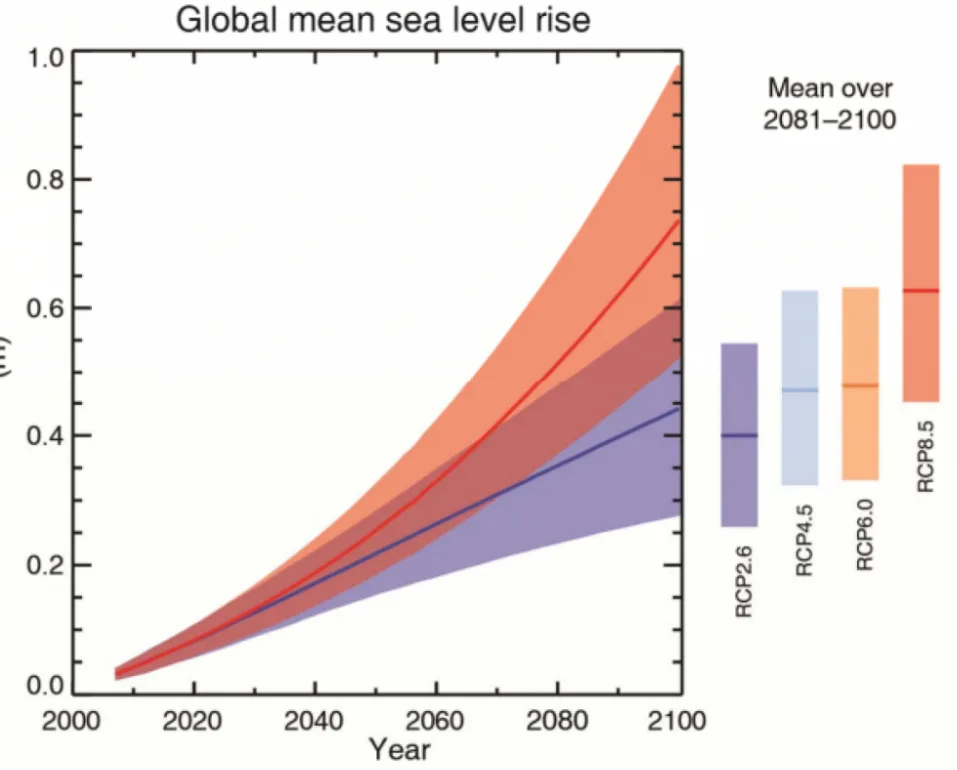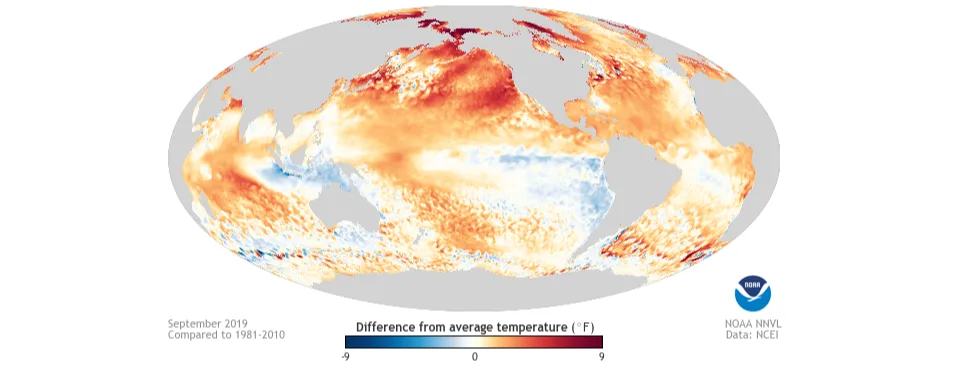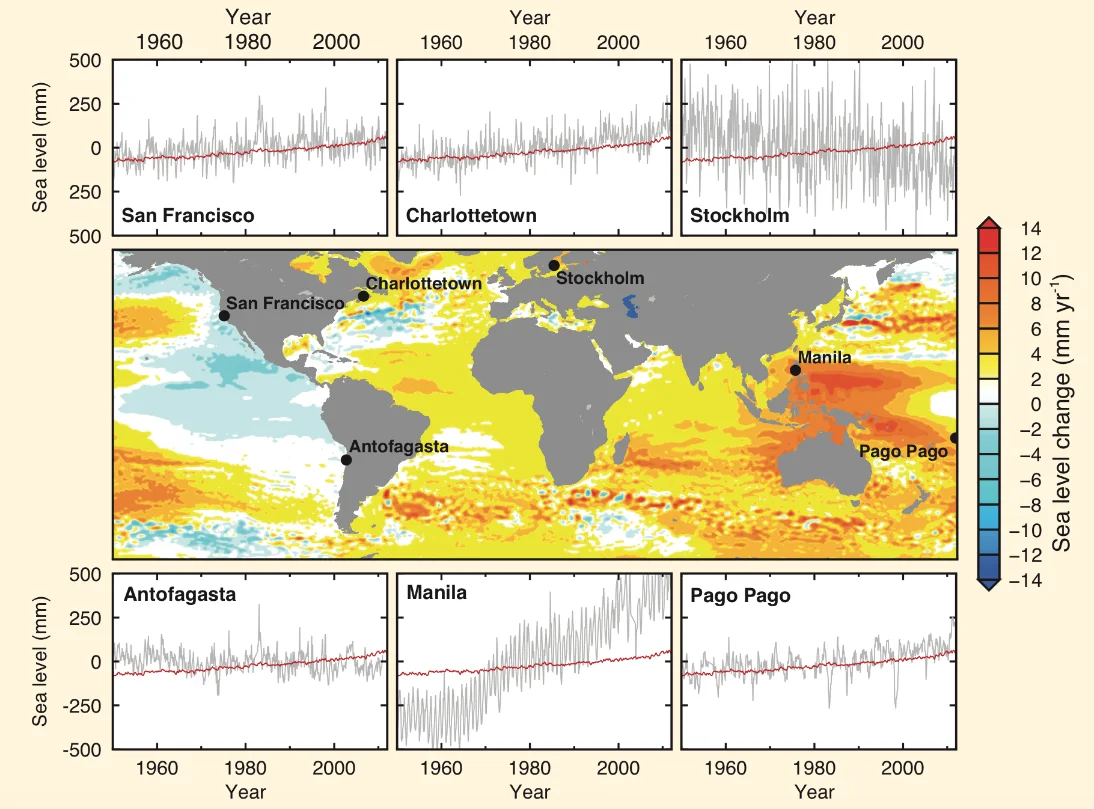
Once-in-a-century floods could become annual events by 2050
Sea level changes are coming and in the future, they'll occur more frequently.
The latest IPCC (Intergovernmental Panel on Climate Change) report, which explains the relationship between ice melt and rising oceans — among many other things — is a clear call to action to avoid extreme coastal impacts that will likely occur in the coming decades. Scientists predict that sharp rises in sea level, which usually occurred once a century, will hit our coasts far more often by 2050 whether we reduce greenhouse gas emissions or not.
The latest projections for sea-level rise by 2100 calculated by the IPCC have increased compared to predictions made in 2014. The increased rise, which is predominantly driven by thermal expansion, is related to the rapid melting of Antarctica. Without a cut in carbon emissions, the level of seas and oceans is expected to increase between 61 and 110 centimetres, which is roughly 10 centimetres more than in the previous projection. This extra increase would have an impact on a considerable number of mega-cities around the world, affecting an additional 10 million people.

Even if we do begin to cut greenhouse gas emissions drastically, experts believe that an increase in sea level anywhere from 29 to 59 centimetres would be inevitable due to ongoing ice melt along both polar and glacial ice surfaces. Sea level will continue to rise for centuries, and if by 2100 we expect an increase of at least 1 metre, by 2300 we could even see water four metres higher than today.
As far as the short-term is concerned, the IPCC expects extreme impacts related to sea-level rise to become more frequent and affect many more places. The report projects much shorter deadlines; if before, great sea-level rise events occurred once a century, by 2050 they could occur once a year.
Apart from the great impact thawing of ice will have on water levels along coastal areas, ocean warming will also cause more intense tropical storms. This will increase associated storm surges, amplifying their impact on our coasts. Moreover, the warming of seas and oceans will damage seaweed forests and other ecosystems. These events are like underwater forest fires and have doubled in frequency over the past 40 years. The IPCC expects these warm-water events to occur at least 20 times more frequently by 2100.

The report also refers to other ocean warming effects. The El Niño phenomenon, a sign of the planet's natural climatic variability, could occur twice as often this century regardless of whether or not greenhouse gas emissions are reduced.
There is a special emphasis on the great reduction in Arctic ice. This loss exacerbates global warming since the darker exposed ocean absorbs more heat from the sun than highly reflective ice. Scientists involved in the research have already announced that in 2019, Arctic sea ice has dropped to its second-lowest level since satellite records began 41 years ago.
The world's high mountain glaciers are also rapidly melting and they too represent an important part of the total rise in water levels. Even more importantly, they are essential for almost 2 million water-dependent people across the globe and are projected to increase landslides in many regions. One-third of the Himalayan ice sheet is already doomed, and future scenarios show that two-thirds will disappear if emissions are not reduced.

1993–2012 from satellite altimetry. Also shown are relative sea-level changes (grey lines) from selected tide gauge stations for the period 1950–2012. For comparison, an estimate of global mean sea-level change is also shown (red lines) with each tide gauge time series. The relatively large, short-term oscillations in local sea levels (grey lines) are due to the natural climate variability.
Melting of ice and snow in tundra regions is also of great concern among scientists, along with the increase of forest fires in high northern latitudes. There will be a generalized permafrost thaw this century, which will continue in the 22nd century. While it is difficult to quantify at the moment, we do know that it is a phenomenon that will release hundreds of millions of tons of carbon dioxide and methane into the atmosphere, amplifying terrestrial climate change even more.











